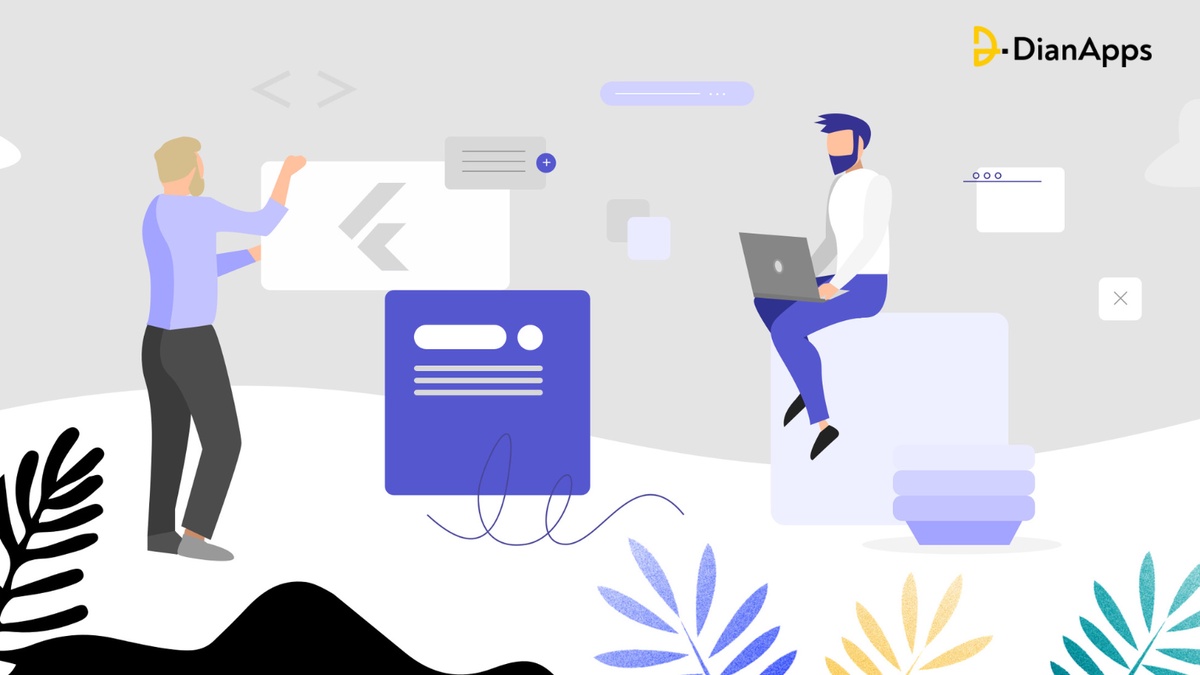If you are an expert in mobile app development, you've already been in a situation to decide whether to create apps for Android or iOS devices. But if you're a beginner, you must be facing trouble with which platform is best for you. These choices influence which technologies you should learn as you work toward becoming a mobile or cross-platform app developer.
As per Statista, 46% of software developers use Flutter. Thus it makes a solid choice no matter where your app development journey takes you.
To know Flutter in a better way, understanding its positive and negative aspects is important to increase the potential of your app and achieve your business objectives.
This article will provide valuable insights by exploring the benefits and drawbacks of Flutter app development services, giving you the bigger picture to make the correct decision for your next app development project.
What makes Flutter stand out among other frameworks?
Flutter differs from most of the alternative mobile app development frameworks and does not rely on web browser technology or the set of widgets that come ideally with each device. Instead, What’s special about the framework is it creates widgets with its own high-performing rendering engine.
What’s more is the simple yet modern programming language, Dart which makes it unique. Major position Flutter’s basic components, like widgets, animations, gestures, and many more are written in Dart. This factor lets developers access, read, replace, and update the code with ease while having control over the entire system and hassle-free access.
What can you build with Flutter?
With the release of Flutter 2.0 and other subsequent versions, you can now develop the following:
- Web apps, including single-page apps (SPAs), Progressive Web Apps (PWAs), and the modification of existing Flutter mobile apps to the web.
- Cross-platform mobile apps for iOS and Android
- Desktop (Mac, Windows, and Linux) apps with Flutter 3.0
Real-life examples of Flutter
-
BMW Apps
Being the second largest Flutter development team after Google, The BMW Group has a crew of 300 employees. ‘My BMW’ app runs on both iOS and Android frameworks and is available for free download from the Apple App Store or Google Play Store.
-
Nubank
A Brazilian neobank, one of the largest fintech firms in Latin America, used Flutter to build an integrated mobile banking app for its customers. While providing various financial services, the app has a smooth and consistent user interface.
-
Reflectly
An AI-powered mental wellness app that teaches users mindfulness and helps them improve their mental health. Reflectly, which is built with the Flutter app development framework, provides a smooth and visually appealing user experience.
-
Hookle
A social media management platform that enables small businesses to manage multiple social media accounts from a single platform. They used Flutter to create their cross-platform app, which allows users to manage their social media accounts efficiently.
-
Motion
A supply chain technology platform that assists businesses in optimizing their inventory management and procurement processes. They chose Flutter for their mobile app development, ensuring that their users have a smooth and intuitive experience.
If you are also looking to build a Flutter app for your business, then the Definitive Guide to Flutter App Development is a must-read.
Benefits of Flutter App Development
-
Serverless startup apps
Startups can use this framework to create serverless apps with Google Firebase as the backend. The good part is its quick development cycle, letting you create apps within the time constraints you've set. This is mostly advantageous to new businesses. It allows them to release and upgrade applications more quickly.
Knowing the difference between Swift and Flutter when it comes to mobile/web app development is a fantastic solution, particularly if there are budgeting and expense constraints.
-
Long-term support from Google
Flutter is backed by Google, which is a major tech user of this technology, so developers can expect consistent support. All bugs will be fixed immediately, and the product will continue to evolve in the future.
Google Fuchsia is another project that Google has been working on for years. The company is creating Fuchsia UI and apps with Flutter to ensure multi-platform compatibility and high performance. Given its involvement in such a large project, we believe Flutter will not be abandoned anytime soon.
-
Intuitive & accessible interfaces
The majority of your users' time will be spent using the UI/ UX design services. As a result, making everything as simple and intuitive as possible is critical. Users should not have to go through a lengthy learning curve in order to access and use your app.
Flutter lets you tweak and even improve the usability of your interfaces. It allows you to build a user-friendly interface. Everything about the apps, from the icons to the colors and layouts, can be customized.
The goal of making it more compatible with your target audience and brand is to achieve your business objectives.
-
Flutter 3’s major improvements
Support for Firebase and theme extension: Firebase now has upgraded tooling, widgets, and documentation, as well as FlutterFire UI for reusable authentication and profile screens.
Material You Support: For custom app design, Flutter 3 supports Material Design 3, with its dynamic colors and updated visual elements.
Rapid refresh rate results in faster iOS release: Flutter 3 simplifies iOS app release by eliminating the need for Xcode project setup.
Support for international text input: Text input will now be available on all desktop platforms, including Chinese, Korean, and Japanese.
-
Speeds up coding & prototyping
Did you know that you can create an app with Flutter in 5 days? Yes, That’s true! If there is one feature that should convince anyone to use Flutter, it's the hot reload functionality. This feature allows you to see any changes made to the code instantly, without having to restart the app.
The modified source code is added to the running app, and Flutter rebuilds the widget tree automatically so that changes are visible in real-time. Hot reload significantly speeds up the mobile app development process and improves overall performance. This lets developers detect bugs as soon as they appear and test fresh interfaces or features without tie-ups.
Disadvantages of Flutter App Development
-
Flutter issues continue to be at a high volume
With so many complex and ambitious open-source projects built on Flutter, it’s natural to face high-volume issues. Developers may encounter unexpected troubles in project development when working on complex projects.
-
Still not amazing support for advanced features
Advanced, cutting-edge features that iOS and Android offer in their most recent OS updates will not be available right away with Flutter. This is by design, as Flutter's approach is to set up these UI features from the ground up (offering native performance) at the expense of replicating the functionality supported by the underlying OS. This means that if you want to use the latest and greatest features of an operating system, you may have to wait.
-
Issues with iOS
Flutter, developed by Google, is favoured for speedy Android app development. However, concerns arise regarding its iOS performance. Flutter's Release Preview 2 aimed to improve iOS aesthetics, showcasing Cupertino widgets with an iPhone settings replica. Yet, updates lagged behind iOS versions. It's uncertain whether Flutter's iOS development will match Android's post-beta.
-
Limited set of tools and libraries
Flutter can be readily integrated into any native API via platform channels. So our options are not limited, but if a library or service does not support Flutter, integrating with it will be more difficult.
-
Confusing learning paths
With so many Flutter resources available to developers of the top Flutter app development companies, deciding which architecture approaches or libraries to use can be difficult, especially since some are outdated or stale. Therefore, it is advised to stick to official documentation and just learn what is required for the project at hand.
In a Nutshell…
We hope you now have a definitive understanding of Flutter app development services and their potential benefits for your company. Despite the fact that Flutter is a relatively new framework with some flaws, it has quickly gained recognition among developers and is now a preferred choice for many.
If you want to improve your business processes and create modern, user-friendly digital products, you should try Flutter. Hire a top Flutter app development company to assist your enterprise in determining whether this framework is the best tool for your specific needs.
Article source: https://medium.com/@marketing_96275/the-pros-and-cons-of-flutter-app-development-ccc348e2f937


No comments yet